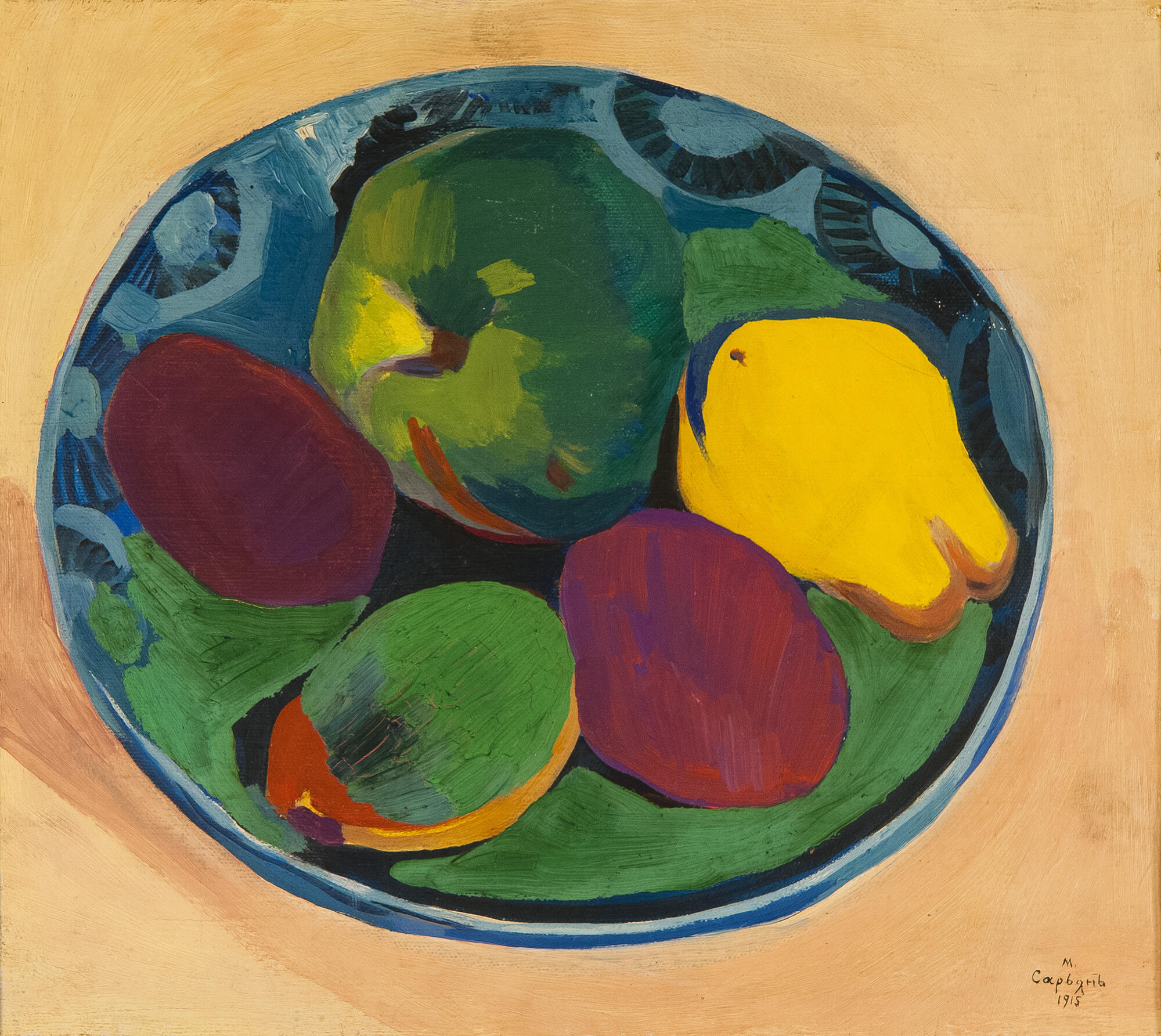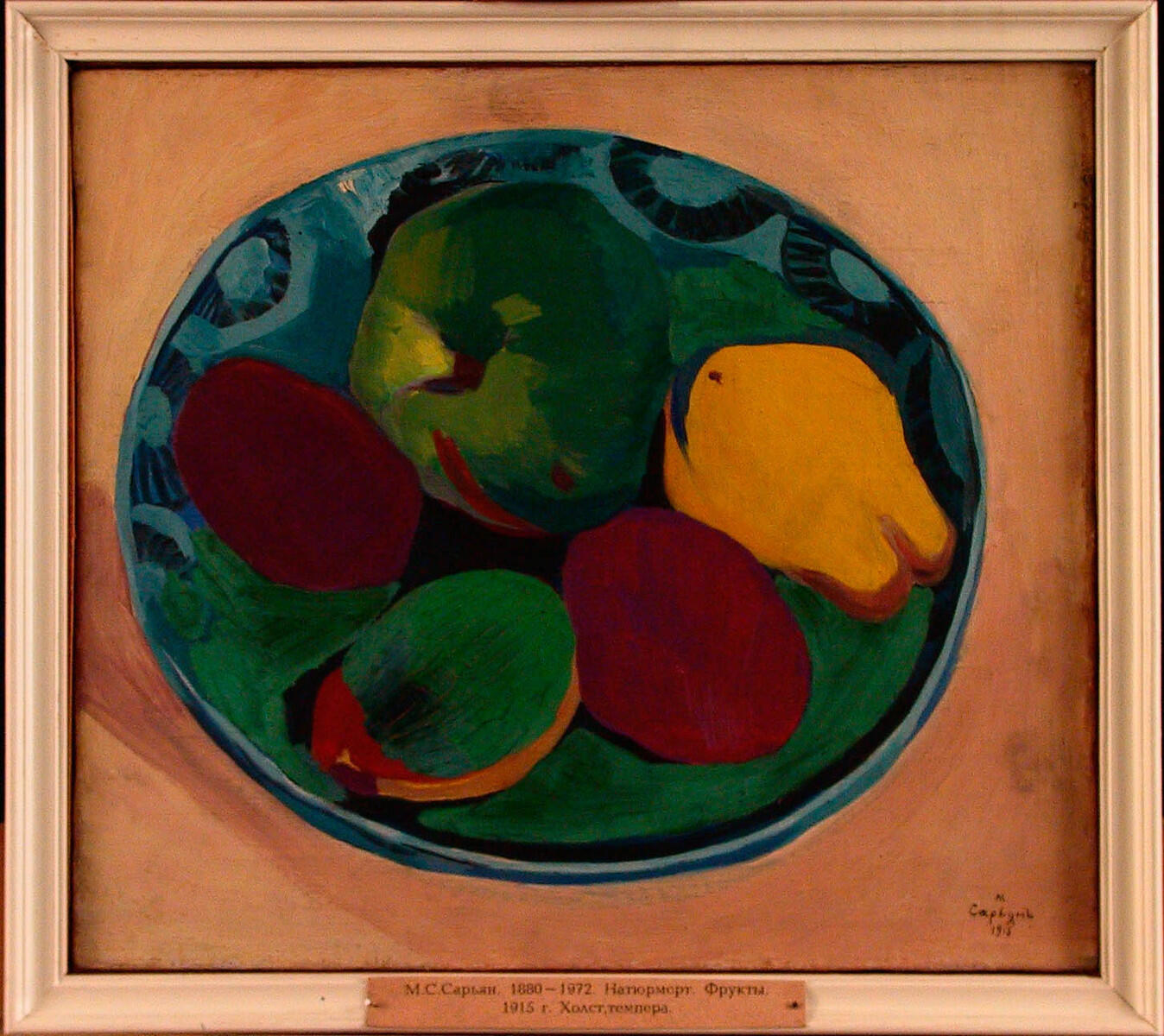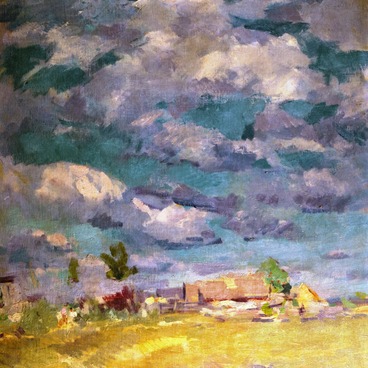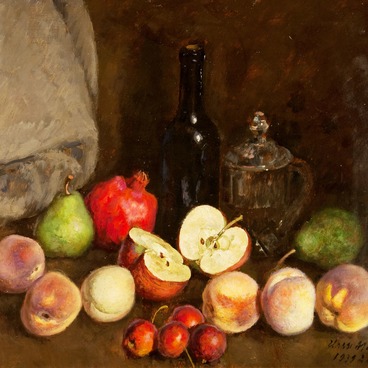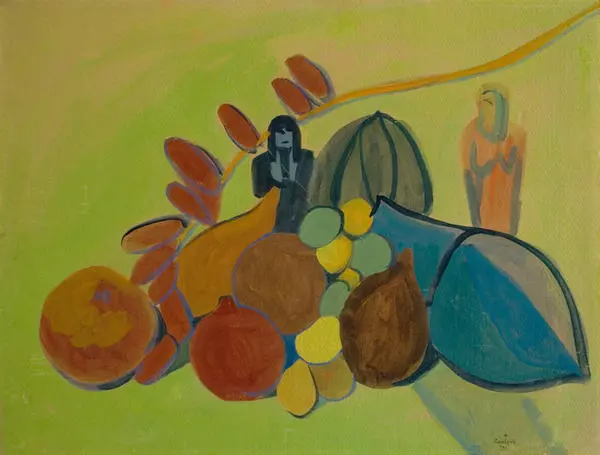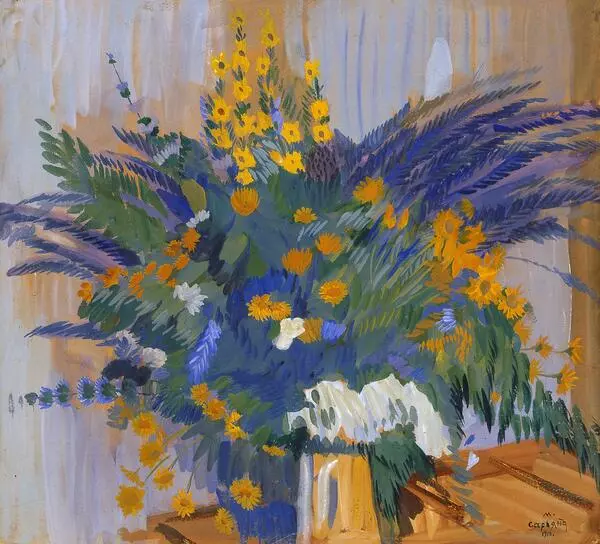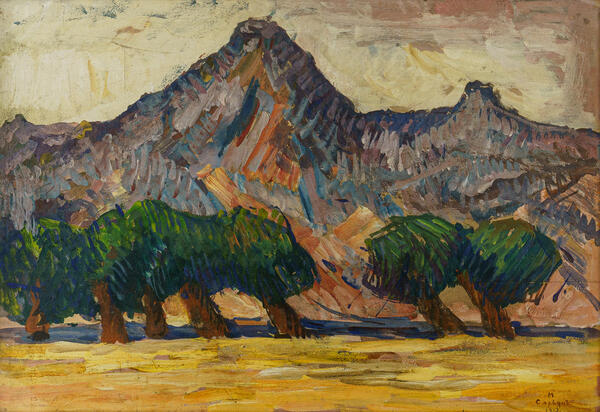Martiros Saryan was one of the greatest artists of the 20th century. During his long artistic life, he created over 3,000 paintings, stage designs and works of graphic and decorative arts. The art of Martiros Saryan affirms the beauty and joy of life.
The painter was born in 1880 in an Armenian family in Nakhichevan-on-Don, where the majority of the population were Armenians who migrated from Crimea in the late 18th century. He started showing interest in drawing at a young age. In 1897, he entered the Moscow School of Painting, Sculpture and Architecture, where he studied under the guidance of Aleksey Korin, Isaac Levitan, and Abram Arkhipov. The students spent their days at the Rumyantsev Museum and the Tretyakov Gallery. The latest French paintings housed in the famous collections of Sergei Ivanovich Shchukin and Ivan Abramovich Morozov had a significant influence on the formation of their worldview.After graduating from the school, Martiros Saryan continued his studies in the studio of the most prominent Russian painters Konstantin Korovin and Valentin Serov, who played a decisive role in his artistic education.
Immediately after graduating from the Moscow School of Painting, Sculpture and Architecture, Saryan moved away from the canons of academic composition and by 1909 had developed his own pictorial language.
In 1910, Saryan, as an already established artist, made a trip to Turkey, Egypt, and Persia, and created the famous Middle Eastern series, inspired by his impressions. With these works, the artist participated in major exhibitions organized by the Moscow Association of Artists, members of the “Mir iskusstva” (the “World of Art” artistic association), and the Union of Russian Artists. Saryan’s paintings were acquired by the famous collectors Ivan Morozov, Ilya Ostroukhov, and Mikhail Ryabushinsky. Soon Saryan traveled to Georgia and Armenia, and in 1915 he moved from Moscow to Tiflis. The absolute majority of his paintings from that period are connected with the South Caucasus.
For several years, still lifes were the main genre for the artist. The painting “Still Life. Fruits” was created in 1915. Images of fruits are presented like large spots of color, a kind of coloristic symbols of the depicted, resembling their natural prototypes. The artist strives to achieve expressiveness through an almost extreme generalization of color and simplification of form.
